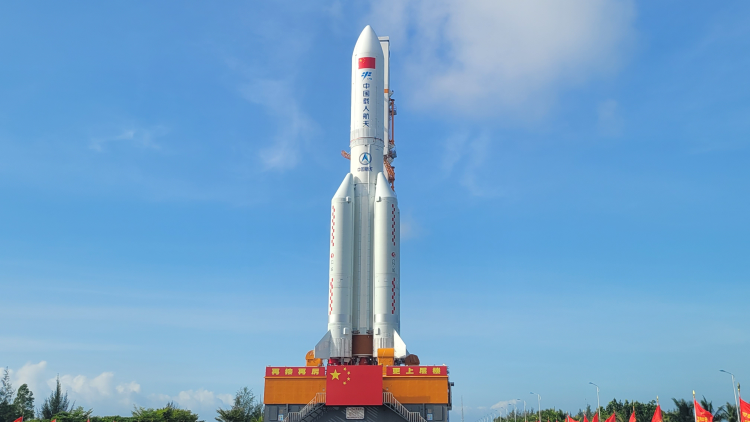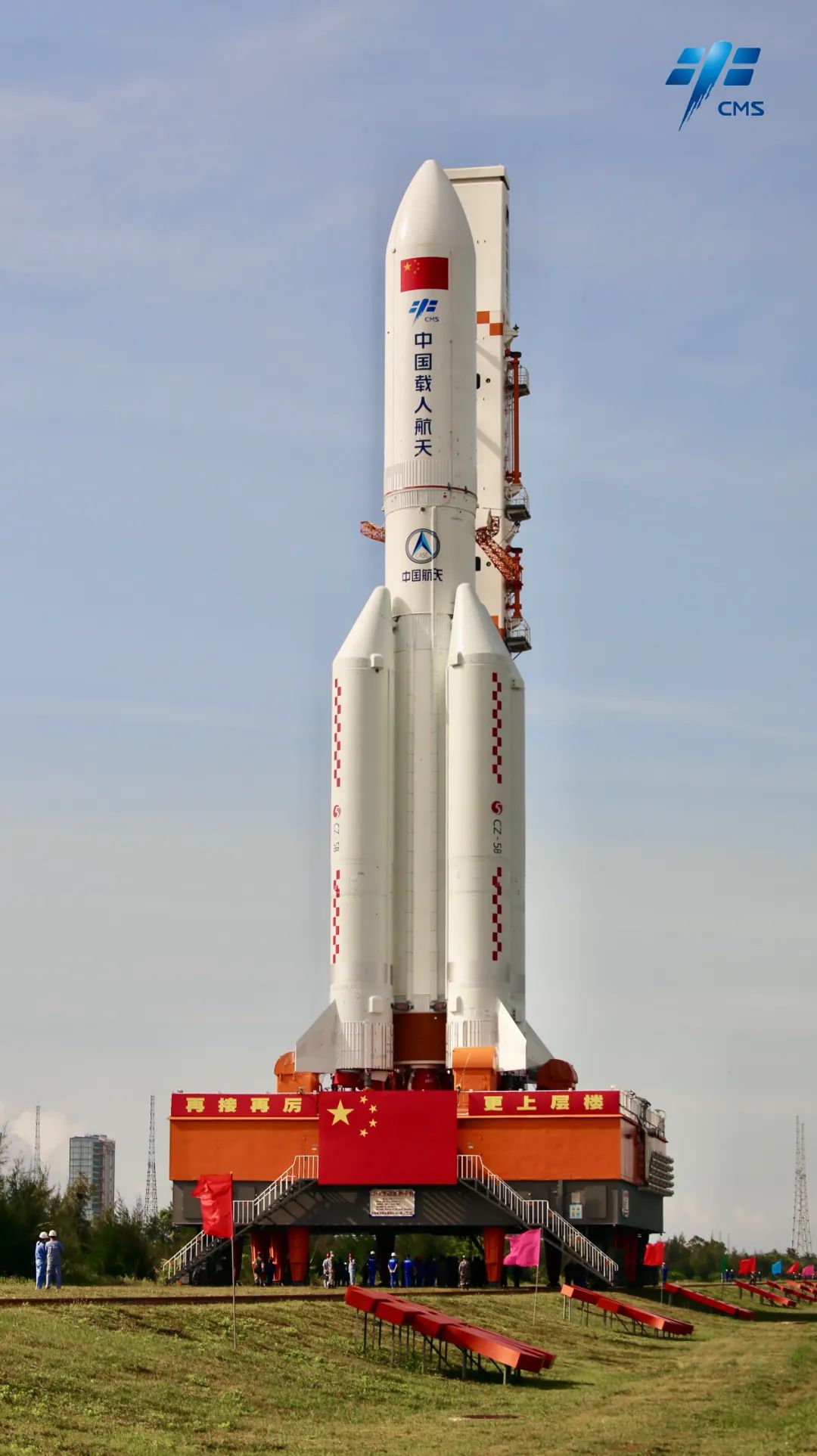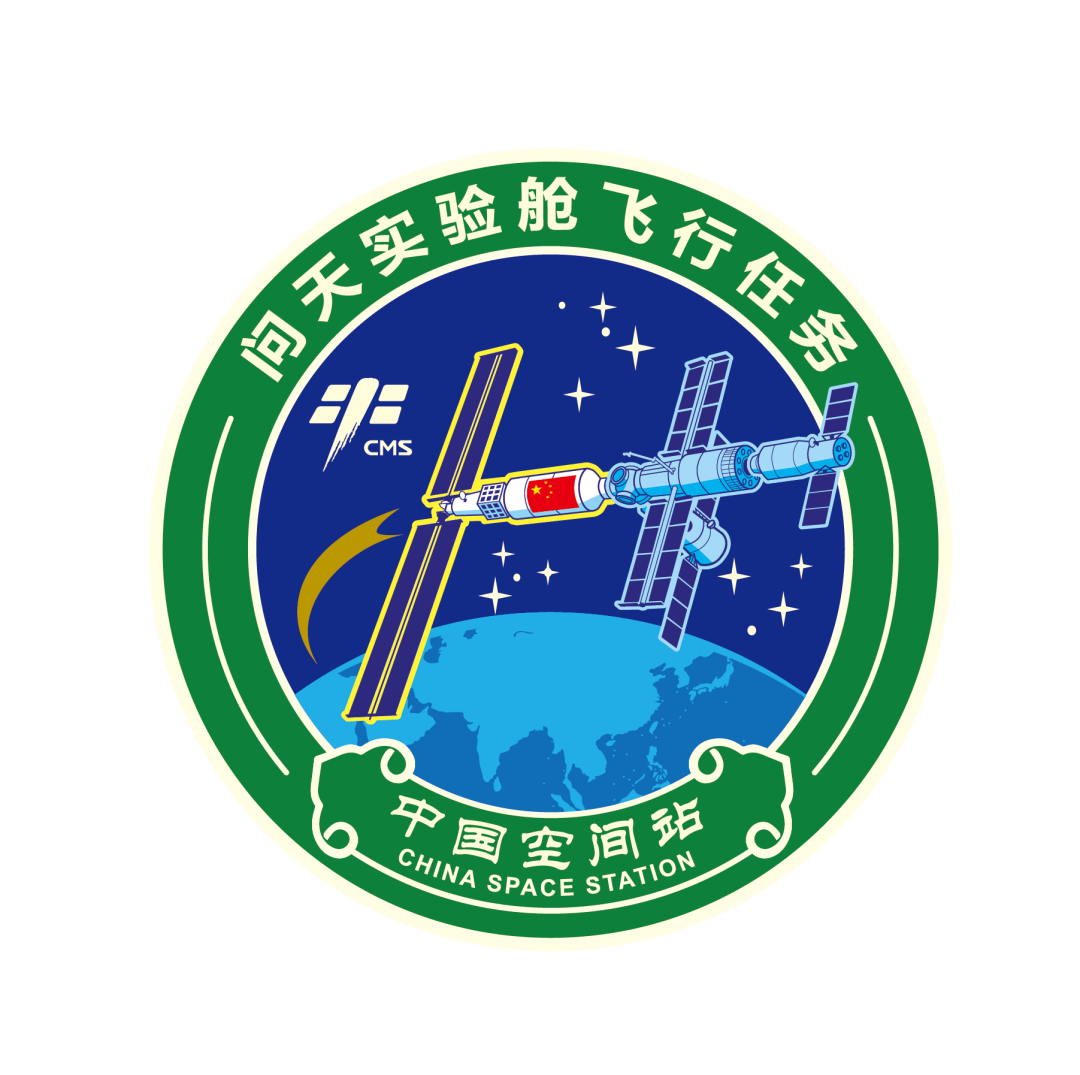Rocket to send Wentian lab module to China Space Station arrives at launchpad
Updated 15:02, 18-Jul-2022 Cao Qingqing
China's Long March-5B Y3 rocket, which will send the Wentian lab module to the country's under-construction space station in orbit in the coming days, has been transported to the launchpad at the Wenchang Spacecraft Launch Site in south China's Hainan Province on Monday morning.
In the next few days, various pre-launch functional checks and joint tests will be carried out as planned at the launch site.
China's Long March-5B Y3 rocket, with the Wentian lab module atop, is vertically transported to the launchpad, July 18, 2022. /CMSEO
At present, China's space station complex is composed of the core module Tianhe, Tianzhou-4 cargo vessel and Shenzhou-14 crewed spaceship.
The Tianzhou-3 cargo craft just separated from the complex on Sunday, leaving the front docking port of Tianhe for the upcoming Wentian lab module.
The three
Chinese astronauts, or taikonauts, who were sent to the core module last month, will witness the rendezvous and docking of Tianhe and Wentian in orbit.
The China Manned Space Engineering Office (CMSEO) unveils the logo of launch mission of Wentian lab module, July 18, 2022. /CMSEO
What's known about Wentian
China's space station will be expanded from the foundational core module Tianhe into a basic T-shaped three-module structure by the end of this year, with Tianhe in the center and the two lab modules Wentian and Mengtian on each side of it.
Wentian is scheduled to arrive in July and Mengtian in October.
The Tianhe has a length of 16.6 meters, a maximum diameter of 4.2 meters and a takeoff weight of 22.5 tonnes. The two lab modules are similar to the core module in length, size and weight, with more specific details yet to be unveiled.
Like the Tianhe, the Wentian lab module is also equipped with living facilities for the taikonauts, including three sleeping areas, a toilet and a kitchen.
After the Wentian docks with the Tianhe, the Shenzhou-14 crew will enter the lab module to activate the life-support system, install the scientific experiment cabinets and conduct experiments.
The cabin Wentian is mainly for studies on space life sciences. It is equipped with scientific cabinets that can support experiments on life and ecology, biotechnology, as well as comparative studies of biological growth mechanisms under varying gravity conditions.
The experiment cabinets can be used to study the growth, development, heredity and aging of plants, animals and microorganisms in space, as well as the research on closed ecosystems. Multi-level biological experiments on molecules, cells, tissues and organs can be conducted.
The crew members will give science classes from the Wentian lab module for the first time.
They will also exit from the Wentian to carry out extravehicular activities (EVAs). The previous Shenzhou-12 and Shenzhou-13 crews all went outside the Tianhe core module to carry out EVAs.
Altogether, the Shenzhou-14 crew plan to conduct two to three EVAs over the next six months, during which they are expected to operate the big and small robotic arms.



